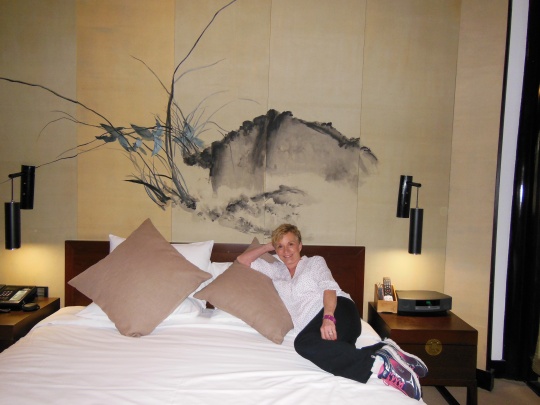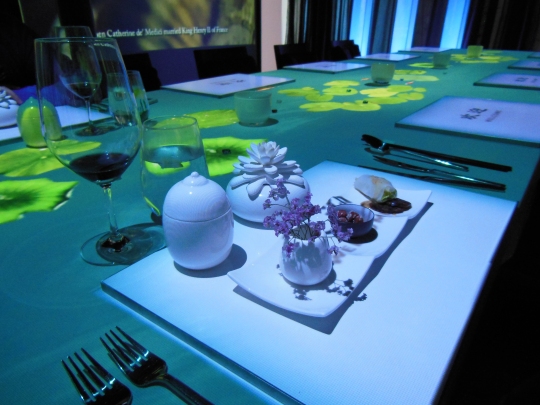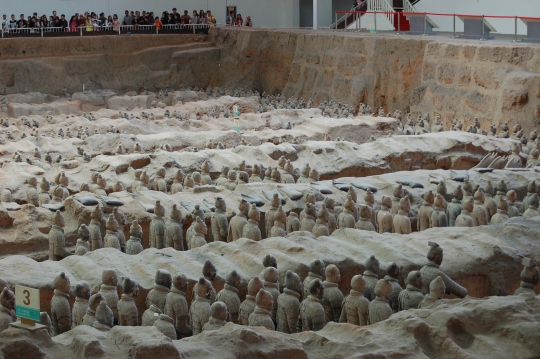Chinese Spring Part 2

Chinese spring: part 2
Shanghai is called the Paris of the East for good reason. Farmers’ houses, new and neat as baby teeth, give way to apartment megaplexes between the airport and Pudong side (still Shanghai, though) where buildings shaped like bows and spirals, topped with spires, domes and crowns line one side of the river. French and British colonial buildings crowd the opposite bank. Bridges boats and ferries carry lively commerce between the two. Underneath, one of Shanghai’s new subways roars through a tunnel.
Shanghai is beyond words, beyond beautiful, bustling, brash. It sparkles like a sapphire on a fine day, broods like a child in the rain. In a 19th century set of trade agreements, the Chinese government ceded land to the French, the British and the Americans along the river. The chic French concession offers shop after shop crammed with silk dresses, soft leathers, fine jade in rainbow colors, much of all the tea in China. Old town is thronged with gawking Spaniards, Aussies, Brits and Koreans. A Swedish festival is on offer along with thousands of red paper lanterns and rows of plastic cats sitting on their hunches waving one arm up and down.
Our guide tells us we must just say “no” to all the vendors and beggars, but Larry slides a few yuan into the bowl of a woman who reminds us how unfathomable fate is and how privileged we are.
We figure out how to take the subway, forcing our ears to pick up unfamiliar sounds, our brains to focus on words that have zero meaning even when translated into Western letters. We struggle to make the sounds that convey “please” and “thank you, good morning, yes and no.” All we really master is Nihau, “hello.” We fall into bed at night, mindful of blurred impressions, bellies full of pork and noodles, pickled green sea creatures and watermelon.
Suzhou

My students, Jane and Wendy, both live in Shanghai. They invite us to visit Suzhou, a city of several million an hour and a half from Shanghai by car. We plan to spend the night at the ancient house and garden of a famous scholar that has just been renovated and renamed Blossom Hill Resort. We follow Jane and Wendy down a narrow alley paved with smooth stones, lined with low whitewashed houses that sport black tile roofs. Hung from the end of each row of tile, pewter medallions shaped like fat arrows appear where simple gutters are lodged in American homes.
Through a carved lattice gateway, we enter a modest looking lobby that opens on a quiet garden. A garden is the pride of the Chinese courtyard home. We roll our luggage past the middle building and climb the narrow steep stairs in the back of the second courtyard. Through another latticed gate, we find a lovely sitting room with bedrooms on either side. This was the quarters of the scholar’s wife 700 years ago. Our room lies behind an old wooden door. An antique table and chairs greets us, a carved wooden sofa in a nook beyond.
A silk screen, 10 feet high and embroidered with the mountainous landscape serves as a headboard for the king-sized bed. The ceiling is beamed with polished mahogany. The mahogany is carved at the corners and where the beams meet to form a cathedral ceiling. The bathroom has a Japanese toilet (if you don’t know about these, look them up) and a frosted glass shower that reaches to the cathedral ceiling. It’s possible that we have died and gone to heaven.

The first afternoon, we visit the Humble Administrators Garden, a place with Chinese lupines and azaleas. We wander over the smooth rock pathways inlaid with frogs, cranes, bats and flowers. We wind around the streams, over the bridges, through the tiled roofs; each turn offers a new perspective. Willows drape down from banks lined with boulders, each chosen for its color and shape. Mosses and vines grow from cliffs and crevices. Wood ducks float in the ponds.

On the second day, the highlight of the entire trip arrives in an invitation to a private luncheon at the Suzhou Art Institute. The Institute features the work of a multimedia artist and we are about to understand what that means. We are ushered into a long, dimly lit room. A dark wood table, long enough for 8 chairs on each side is set with only four places. Jane and Wendy sit across from us. Lotus leaves flow down a blue river in the middle of the table, projected, in brilliant colors, from the ceiling. Gold and white Koi swim among the leaves. For some reason, I reach out for a tiny Koi. It darts away, we all catch our breath. Larry lays his hand in the stream. The water ripples out from his fingers. We giggle like six-year-olds.

Eight video screens come to life on the walls behind us. The theme of the lunch is the Lotus, we are told by the narrator in Chinese with English subtitles. Most of the film recalls the history of the feast, of feasting together, of music and dance, art and wine with food, fine cognac and theater. It is not just what you eat, the narrator explains; it’s with whom you eat it. We feel in fine company.
There are 13 courses: lotus soup, lotus seeds, lotus pods arrive, some as food, some as decor. Of the 13, three are fragrance courses. A small ceramic pot, topped with a ceramic lotus, opens to release the heady scent of a lotus flower. At some point, we are served a tiny portion of vegetables, perfectly plated, accompanied by two tiny goldfish in a shot glass that sports a lotus sprout. At another moment, I cannot stop the tears from streaming down my face.
Wendy sits silent through most of the meal. “Words are powerless”, she says later. “Yes, there are none,” I say. I feel like I have seen the future of art, a sensory fusion beyond some thin layer of words. We are all deeply touched by this work. I am honored that somehow, the universe has delivered this experience to my doorstep.
We trail out through the exhibit. Two dozen steel lotus blossoms rise up from a pond in the courtyard. A larger number of blown glass lotus seed pods stand side-by-side in another room. The walls are hung with life-size photographs of the artist. Bound by wide gauze strips, she struggles to free herself. In one piece, her arms are tied to her side by bras and garters that stretch tight across her belly, her thighs, her shoulders. Her life’s arrow has found my heart.
I know that we will have other wonderful meals, love other artists, but this experience will never happen again. Travel helps you appreciate the singularity of things, the importance of being open, the power of culture and energy of life.


Recent Comments